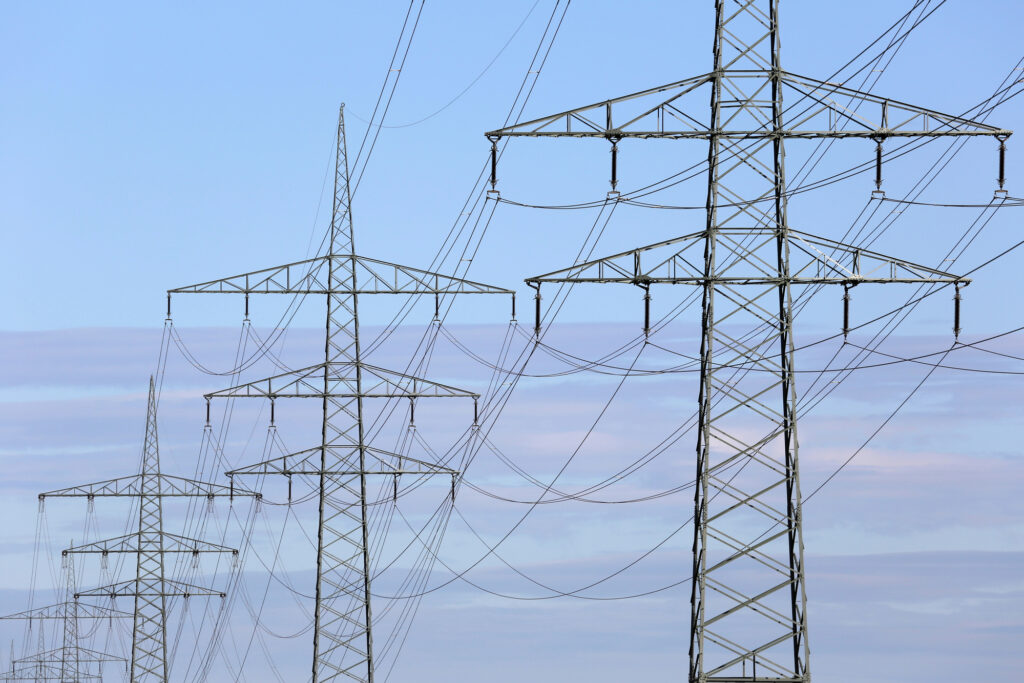
When looking at energy management, both load shifting and peak shaving are critical methods used to optimise energy use and reduce costs. While they are similar and often used in tandem, understanding the distinct roles and benefits of each is key to a healthy, independent, and cost-effective energy strategy.
This blog post will therefore look into the debate: “Load Shifting vs Peak Shaving.”
Understanding Load Shifting
Load shifting is a strategic energy management method that involves moving the consumption of electricity from peak demand periods to times of lower demand. This is particularly advantageous in areas where demand-driven daily fluctuations in electricity costs occur. Customers can take advantage of cheaper rates and greatly cut their energy bills by timing their energy use to occur during off-peak hours.
Load shifting helps to maintain grid stability in addition to promoting individual savings. Moving non-essential use to slower times of day helps balance the load on the grid during peak hours when demand is high and resources are limited. This reduces the need for costly, carbon-intensive peaking power plants, which are frequently brought on during periods of high demand to cover the electrical supply shortage.
Understanding Peak Shaving
Peak shaving is focused on reducing the peak electricity demand within a facility or across a power grid. Peak shaving seeks to lower total demand during crucial peak times, in contrast to load shifting, which shifts energy use to various times. Businesses trying to cut their demand charges—which are sometimes determined by the highest amount of electricity used throughout the billing cycle—may find this especially crucial.
Peak shaving is using energy storage systems or other power sources when demand is at its highest. Through the use of these resources, facilities can prevent using too much electricity from the grid. During busy times, for instance, you might use battery storage devices, solar panels, or onsite generators.
Peak shaving improves the electrical grid’s efficiency and dependability as well. Reduced maximum demand helps to avoid possible overloading of grid infrastructure, which avoids outages and guarantees a steady energy supply. This proactive strategy encourages a more sustainable energy consumption pattern, in addition to resulting in large cost savings.
Comparison of Objectives
Even though they are both essential to energy management, peak shaving and load shifting have different goals that meet various demands in the energy market.
Load Shifting
Changing when energy is consumed to coincide with times of lesser demand is the main objective here. During off-peak hours, this calculated change enables companies and consumers to benefit from lower energy costs. More generally, load shifting attempts to more evenly spread energy demand throughout the day, which can reduce grid stress and encourage the usage of renewable energy sources when they are most plentiful.
Peak Shaving
Peak shaving, on the other hand, aims to reduce the maximum energy consumption during busy times. It is not about changing the time of energy use; rather, it is about using less energy at crucial periods. Organisations can dramatically cut their demand-charge-related energy expenditures by controlling and restricting peak demand. Moreover, peak shaving is essential to improving grid stability during periods of high load, which lowers the possibility of power outages and the necessity for expensive infrastructure improvements.
Though various methods and technologies are needed to accomplish their different objectives, both strategies are necessary to build a more sustainable and efficient energy system.
Tools and Technologies
Peak shaving and load shifting both use a range of instruments and technology, each designed to accomplish their respective objectives.
Load Shifting
Smart Thermostats and Appliances: These systems use real-time energy use and cost data to modify heating, cooling, and operation schedules automatically. By doing this, they essentially move energy use to cheaper off-peak hours.

Energy Management Systems (EMS): These highly developed systems use software and sensors to track and manage a building’s energy consumption. Energy consumption can be automatically shifted by EMS, which can also dynamically adapt to variations in demand or the price of energy.
Peak Shaving
Battery Storage Systems: These systems store energy when demand and costs are low (often during off-peak periods) and release it during peak demand times. This not only reduces reliance on the grid but also stabilises energy costs by avoiding high peak rates.

Onsite Generation: This can include solar panels, wind turbines, or backup generators that provide power directly to a facility during peak periods. By generating power onsite, companies can drastically reduce their draw from the public grid during the most expensive times.
The particular energy management goals of an organisation, the local regulatory framework, and economic factors will all influence which of these methods and technologies is best. While some could choose sophisticated battery storage to support peak shaving, others might discover that the most economical approach to moving loads is through smart appliances and an EMS. In the end, these technologies working together provide an energy infrastructure that is more robust and effective.
Benefits to Stakeholders
Both load shifting and peak shaving offer substantial benefits to various stakeholders involved in energy management, from individual consumers to large-scale utilities.
Load Shifting
Cost Savings for Consumers: Customers can save a great deal on their electricity bills by using energy during off-peak hours when energy costs are lower.
Grid Management for Utilities: By helping utilities better control demand throughout the day, load shifting lessens the need for costly and ecologically harmful peaking power facilities. Better integration and use of renewable energy sources at their periods of greatest production are also made possible by this.
Peak Shaving
Reduced Demand Charges for Businesses: Businesses can dramatically reduce their demand charges—which make up a sizable amount of commercial electricity bills—by reducing peak electricity use.
Enhanced Grid Stability: Peak shaving helps the electricity system remain stable and reliable generally by controlling and lowering peak demand, especially in cases of severe weather or other high-demand situations.
Fundamentally, by lowering energy costs, these energy management techniques not only support economic gains but also environmental sustainability through more effective resource usage. They also improve the energy grid’s operating dependability, protecting against blackouts and guaranteeing a steady supply of electricity to every consumer. Effective application of these techniques thereby fulfils the dual objectives of environmental stewardship and economic efficiency.
Implementation Challenges
Several issues can impact the efficacy and acceptance of load shifting and peak shaving. Depending on the approach, these difficulties differ but frequently coincide with regard to user acceptance, financial commitment, and technology integration.
Load Shifting
Consumer Engagement: Changing consumers’ energy usage patterns can be challenging. Good load shifting calls for both active involvement and a readiness to change daily schedules, which isn’t always convenient.
Dependence on Smart Technologies: Load shifting mostly depends on real-time data exchange and smart grids. Because of this reliance, any technology disruption—such as outages or malfunctions—can make the plan less effective.

Regulatory and Market Structures: The advantages of load shifting may be limited in some areas by the absence of dynamic pricing or incentives for using energy off-peak, which would discourage individuals and companies from taking part.
Peak Shaving
High Initial Costs: Peak shaving options that need onsite generating or energy storage system installation come with a high initial outlay. For small companies or home users in particular, this might be a significant obstacle.

Maintenance and Efficiency: To keep them running well, generators and energy storage devices need routine upkeep. These systems’ capacity to successfully reduce peak loads may be impacted by a gradual deterioration in performance.
Complexity in Management: Peak shaving management that works needs constant observation and quick reaction to shifting energy needs. This intricacy increases the operating difficulties by requiring advanced management systems and qualified staff.
Despite these difficulties, the advantages of peak shaving and load shifting—which include lower energy bills and better grid stability—make them all worthwhile. Stakeholders can make investments in user education, pursue legislative changes, and make use of technological developments that make the integration and administration of these energy measures easier.
Regulatory and Policy Framework
The legislative and policy frameworks in place have a big impact on how load shifting and peak shaving are implemented and how successful they are. These standards are made to make sure that energy management techniques protect consumer interests and advance sustainability, in addition to being in line with national energy goals.
Key Aspects of Regulatory Impact
Incentives and Tariffs: Incentives for load control and energy efficiency are provided by several governments; these include subsidies for energy storage systems or refunds for installing smart appliances. Regulating bodies also frequently set tariff structures, such as time-of-use (TOU) rates, which can increase the appeal of load shifting by providing cheaper rates during off-peak hours.
Requirements for Grid Participation: Grid management participation by energy consumers—especially large-scale producers or industrial users—may be regulated. This covers guidelines for using tools like demand response programmes to help with peak shaving.
Standards for Technology and Safety: Policies guarantee that performance and safety requirements are met by energy management technologies. Maintaining user safety and system integrity depends on these rules, especially when putting backup generators or battery storage systems into place.
Navigating the Framework
Knowing and negotiating these regulatory environments is essential for companies and utilities. Compliance guarantees the tactics are as profitable and successful as feasible, in addition to avoiding legal consequences. To optimise cost reductions, for example, load shifting efforts should be coordinated with TOU rates, and taking part in demand response programmes might open up new revenue streams.
Challenges within the Framework
Complexity and Variation: Different jurisdictions have somewhat different and often very complicated regulatory environments. Standardising their energy management procedures may be difficult for multi-regional operators as a result.
Changing Policies: Changes in the political atmosphere, technical developments, or dynamics of the energy market can all affect energy policies. Keeping up with these changes calls for flexibility and early involvement in legislative revisions.
Companies should spend on regulatory experience and keep regular contact with regulatory agencies to manage these elements. This preventive strategy not only facilitates compliance but also influences policy creation to better support cutting-edge energy management techniques like peak shaving and load shifting.
Even though peak shaving and load shifting are two different energy management techniques, they are both very important for cutting energy expenditures, improving grid stability, and advancing environmental sustainability. Every tactic calls for a customised approach, including the appropriate technology and knowledge of the regulatory environment.
These tactics are worthwhile even with the implementation difficulties because of their advantages, which include operational efficiency and financial savings. Effective integration of load shifting and peak reduction strategies by organisations not only makes the energy system more stable but also establishes them as progressive energy management leaders.







